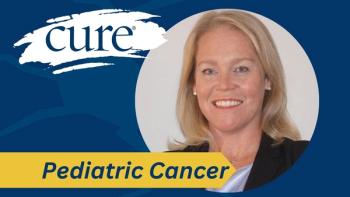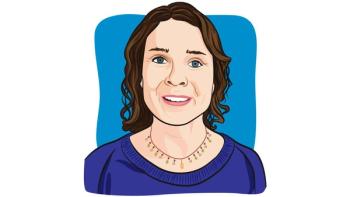
Starting a Yoga Practice: Practical advice from a survivor turned yoga teacher
Libby Lowe, of
• Can you walk half of a mile without getting winded?
• Can you fold forward to touch your knees, shins, or the floor without getting dizzy?
• Can you lie comfortably on your back, your hip and your stomach?
• Can you get down on all fours?
• Can you twist, raise your hands above your head; balance on one foot?If you answered "no" to three or more questions, don't worry! You can still do yoga. Jean suggests starting with a restorative class or chair yoga.If you answered no to two or more questions, you might like a gentle beginning class that is no more than an hour."The more times you answered yes, the more choices you have. However, during cancer treatment, staying active is encouraged, but metering out your energy is also advisable. There's no point in blowing a whole day's energy on one activity," says Jean.Once you have a sense of your level, search local studios online; don't be afraid to call and ask specific questions to find the right instructor and class for your level.Many studios offer introductory classes or series. These courses are a great way to get started and connect with a community of other beginners. Because there isn't a national, standardized certification for teaching survivors, ask questions and do your homework before taking any class.Here are some questions that might be helpful:
• What is the level of students who usually come to your class?
• Are you familiar with cancer treatments?
• Do you have experience working with people with illness or injury?
• Do you give alternatives movements for people with special needs?
• How long have you been practicing, teaching?Classes with names like Gentle Yoga or Restorative Yoga are usually great for beginners and those with illnesses or injuries."Gentle yoga can mean different things to different people, but it's an indication that the class will be slower. Studios that specialize in working with students that are health challenged are out there and growing," says Jean. "My original training at A Gentle Way in La Mesa, Calif. is run by Lanita Varshell, a plus-size woman with fibromyalgia. When you walk into the studio, you can tell from the abundance of blankets, pillows, straps and blocks that the studio has many yoga props and adaptations." Restorative classes incorporate many props and focus is on breath awareness, deep and total relaxation and allowing gravity and proper propping to ease muscles into position. One the other hand, classes with words like "power," "hot" and "core" in the title will be too intense for beginners--especially those in treatment or recovery.Setting Your IntentionAbove all, yoga should feel good. Ideally, when you walk out of class you will be grateful for the time you dedicated to yourself, feel empowered in your own skin and proud of what your body can do.When Jean started her post-treatment practice, she realized she had to honor where her body was and not get hung up on what she once was able to do. "Ask yourself what the main goal for your yoga practice is and be willing to do less and feel more. During cancer, a good day for me was taking a shower, making dinner and possibly feeding the cat. I was very frustrated that my regular routine of exercise was interrupted and I had no idea who to ask or where to go. After abdominal surgery for colon cancer, I was given three weeks to recover and chemotherapy was started. I crawled into bed and stayed there, unless I was throwing up."Jean advises beginners or those returning to exercise not to get caught up in trying to master specific poses, but to get in touch with the original intention of yoga: deep meditation. When she started her own practice, she admits that the relaxation at the end of class--called savasana--seemed like a waste of time to her. As her practice deepened, that chance to relax and full let go became the central focus."Be curious about the journey you are embarking on and allow a sense of humor into your practice. Yoga is for our joy, our gratitude and our love of life. It is a life-affirming activity that brings us back to very basics of being alive: it focuses us on our breath and our heartbeat. As long as you are breathing consciously, you are doing yoga. When you outstretch your hand to help another, you are practicing Karma yoga. When you kiss a beloved and hold their gaze, you are practicing Bhakti yoga. We are never not practicing yoga, we are just not attending to our practice."The basics:
Many people are nervous walking into their first class. Here are some tips to make it easier.
• Go barefoot and wear clothing that is comfortable but not too loose. Loose clothes can get in the way.
• Bring water and a towel.
• It's okay to take breaks during class or leave to go to the restroom.
• Most studios have mats your can borrow, but check before you go. If you have joint issues, you may want to consider purchasing an extra-thick mat or using two mats.
• Respect your limits. It's okay not to do a pose if it's uncomfortable. An instructor who crosses over from encouraging to pushy isn't the right person for you.
• Yoga is about finding joy in the present. Don't worry about "doing it right." Have fun and celebrate what you can do.Libby Lowe is social media manager for Yoga Bear.




